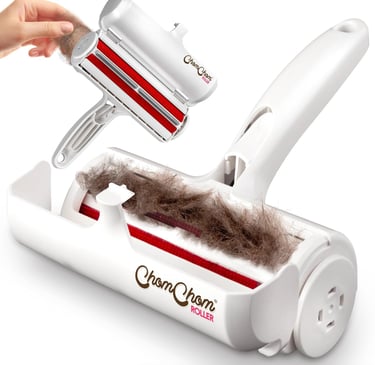Why Do Some Cats Change Color as They Age?
Some cats experience subtle (or not-so-subtle) coat color changes as they grow older. Learn why your kitten’s fur might darken, lighten, or shift in pattern—and what it means for their health.
COLORS
Sara P.
When I adopted my Siamese kitten, Luna, I fell in love with her pale cream coat and those signature dark ears and paws. But over the next few months, something surprising happened to her once-light fur began to darken, especially on her back and tail. At first, I thought it was just a lighting trick or maybe something in the shampoo I used. But no, my cat was truly changing color.
That moment launched me down a rabbit hole of curiosity. I started paying attention to other cats and asking fellow cat owners if they had ever noticed the same thing. As it turns out, cat coat color changes are more common than I realized and not always for the reasons you might think.
Let me share what I’ve learned from one observant cat lover to another.
Genetics: The Blueprint Behind the Color Shift
First, it's important to know that a cat's coat color is determined by genetics, but those genes don’t always tell the whole story. In some breeds, like Siamese, Burmese, and Himalayan cats, coat color is influenced by temperature-sensitive enzymes. Yes, temperature.
These cats have a gene that causes their fur to darken in cooler parts of the body (like the ears, tail, and paws), while staying lighter in warmer areas (like the torso). That’s why Siamese kittens are born nearly white because the womb is warm. As they grow and their extremities cool, the darker color begins to appear.
I saw this firsthand with Luna. During the summer, her coat stayed relatively light. But come winter, she looked like she was wearing a completely different outfit. It wasn’t just fascinating, it felt like watching a living mood ring.
Aging and Melanin
Another reason for color changes as cats age has to do with melanin, the pigment responsible for coloring fur (and skin). Like humans, some cats produce more melanin as they grow, which can darken their fur. Others may produce less, leading to graying or lightening over time.
I had an older black cat named Jet who started showing reddish undertones in his coat as he reached his senior years. It wasn't anything dramatic, but under sunlight, you could clearly see the shift. My vet explained that this can be perfectly normal, just a result of aging pigment cells doing their thing.
Sunlight and Seasonal Changes
Just like us, cats can be affected by the sun. Prolonged sun exposure may lighten a dark cat’s fur slightly, especially on areas like the back or sides where they love to sunbathe. My tabby, Maple, had a noticeable “sun patch” along her spine one summer from all the time she spent lounging in a warm window. By winter, it faded.
Cats with dark coats may also shift shades depending on the season. Some develop thicker winter coats that appear lighter or fluffier, only to shed them come spring and return to their usual color. It’s all part of their natural rhythm, and once I started noticing the pattern, it made perfect sense.
Health-Related Causes
While most color changes are harmless, it’s worth noting that some can indicate an underlying health issue. If your cat’s fur starts to change color suddenly or in patchy, uneven ways, it might be a sign of:
Nutritional deficiencies (especially lacking amino acids like tyrosine, which affects black pigmentation)
Hormonal imbalances
Skin infections or conditions
Stress or trauma
For example, a once-black cat turning brownish or rusty might not be absorbing enough nutrients. If the change is sudden or accompanied by other symptoms like weight loss or fur loss, it’s always smart to talk to your vet. Peace of mind is worth it.
Thankfully, most of the changes I’ve witnessed in my own cats have been gradual and tied to natural aging or environmental factors. But I’ve learned not to brush off anything dramatic or new without checking in with a professional.
The Charm of a Changing Coat
What I love most about this phenomenon is that it adds another layer of personality to each cat. Their appearance evolves with them. That little dark stripe on the tail, the silver hairs on the chin, the cream patch that seems to grow each year they become part of the cat’s story.
And if I’m being honest, I’ve grown attached to these changes. They remind me of how cats, like people, grow and shift with time. Luna, once my pale kitten, is now a striking seal-point beauty with deep contrast and even more attitude. Jet’s reddish tint became his signature. And Maple’s seasonal coat change is like nature’s reminder that time is moving forward, even when we’re curled up together on the couch.
Final Meow
If you’ve noticed your cat’s fur changing color and wondered why, you’re not alone. It’s one of those small mysteries that makes living with cats so endlessly interesting. Most of the time, it’s perfectly normal, just your cat being their wonderfully unique self.
Keep an eye on it, take note of any changes, and don’t hesitate to ask your vet if something seems off. But more than anything, enjoy it. Your cat’s coat is just one part of their story, and it’s one that’s always evolving.
Kitty Catz
Follow Kitty Catz on social media for purrfect updates and blog highlights!
© 2025-2030. All rights reserved.

